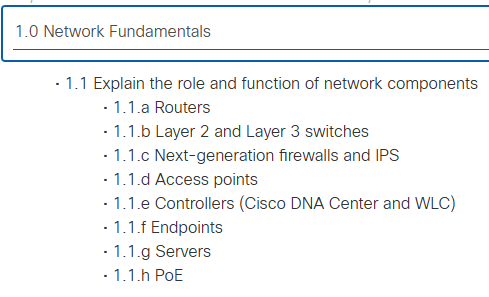In my previous post, I set out why the Cisco pathway represents the most fitting choice FOR ME (your are allowed to think otherwise for YOU). From a career standpoint, I view it as both a natural and logical progression of my knowledge. More importantly, I am persuaded that a focus on core Network Engineering is a wise course – it sharpens my reasoning, deepens my understanding, and enables me to grasp the underlying processes behind much of the environments I have encountered. To this end, I shall be embarking upon the Cisco Certified Network Associate (CCNA) and recording my journey here.
Although I already possess a few industry-grade technical certifications, I feel compelled to return to the very foundations – networking – especially since I have recently completed a diploma in computer networking technology.
I do not intend to publish exhaustive tutorials in this space; rather, my purpose is to present each concept in plain terms, to demonstrate its application in real-world scenarios, to share insights from my own experiences, and to direct readers towards valuable tutorials and resources, both free and paid.
Newbie, Experience (Maybe in Any IT Field), or Expert?
My rule of thumb is the picture below:

As my rule of thumb, if you cannot immediately recognise , explain, or demonstrate practical experience with the components listed under Network Fundamentals section for the CCNA blue print on Cisco website – such as routers, Layer 2 and Layer 3 switches, if you do not know the difference between routers and switches (pleeeaaaasseeeee …. they are not the same), next-generation firewalls, intrusion prevention systems, access points, controllers (e.g. Cisco DNA Center and WLC), endpoints, servers, or Power over Ethernet (PoE) – then, by definition, you are still at the level of a beginner.
But however, whatever stage you may be at – whether a novice, a seasoned practitioner, or an expert, it must be said without embellishment that Cisco examinations can whop your ass! It would be an illusion to think that networking concepts can be mastered “half-asleep, standing akimbo.” To really grasp it, you need to stay focused, stay consistent, and keep practicing repeatedly. You must read widely, revise consistently, and make use of tools such as flashcards and structured study resources. The less experience you have in the industry, the more essential this dedication to practice becomes.
The moral of this section is that you need to practice, A LOT!!!
Resources
Preparation must be anchored in hands-on “labbing,” beginning with accessible tools like Cisco Packet Tracer. Beyond this, Cisco Modelling Labs (CML) provides a powerful, real-world emulation of Cisco’s product suite. With CML, you can observe precisely how devices operate in live environments—even down to the subtleties of commands that take time to propagate, allowing you to witness the process unfold in real time. For those seeking a no-cost option, Cisco DevNet Sandbox offers reservable CML instances entirely free of charge. This invaluable multi-device and multi-APIs resource enables learners to bridge traditional networking with the modern domains of automation, programmability, and DevOps practices. Within this environment, you can safely explore a wider range of Cisco products, experiment with APIs, scripting, and network programmability, and strengthen the very skills that align with the future of networking.
Equally important is cultivating the habit of searching for information. A career in networking will involve an ongoing process of “googling” and upskilling; therefore, there is no better time to begin developing this instinct than now.
Finally, a word on Artificial Intelligence. As a beginner, AI can be both a blessing and a curse. It certainly offers benefits that may accelerate your learning, yet it can also foster dependence and short-circuit genuine understanding. Thus my advice is not to avoid it entirely, but to use it with caution—and I repeat for emphasis—use it with caution !!!
Tutorials: My Recommendations
Your most reliable companion in this endeavor will be YouTube. For beginners in particular, I place Jeremy’s IT Lab at the very top of the list. His explanations are delivered at a deliberate and measured pace, making even complex concepts remarkably easy to follow. If your budget allows, I would go further to recommend his paid course on Udemy. In short, whatever Jeremy advises—whether it be a lab exercise, a study focus, or even a resource to purchase—heed his guidance without hesitation. He recommends Boson a lot, and I totally agree with him
In addition, I recommend the Custodian Data Centre’s YouTube channel for those who wish to gain a visual peek into what real data centre look like. To complement this with a broader perspective on networking and the internet itself, I strongly suggest the video “How Does the Internet Work? – Glad You Asked S1“, which provides a clear and engaging explanation of how the global network operates.
Aim to Learn “Entreprise Networking”, Not Just “Networking”.
This is different from your home WIFI! … very very different. With every topic you encounter, ground your understanding by considering how it is applied within real-world enterprises. In networking, the term enterprise encompasses far more than just corporations—it refers to organizations and institutions of every scale and sector. Think of banks, insurance companies, universities, colleges, state high-school boards, sports teams, power stations, shipping companies, shipping vessels, your nation’s Army, Navy, and Air Force, security agencies such as the FBI and CIA, your local airport control tower, the airport itself, stadiums—the list is virtually endless. All of these fall within the scope of what we call enterprises in networking terminology.
You would observe that the sizes of these enterprises varies greatly, and so do their needs. A small regional bank may require secure VPN access for remote employees, while a multinational financial institution must manage vast data centres, redundant links, and advanced intrusion detection systems. A sports stadium may focus on delivering reliable, high-density Wi-Fi to tens of thousands of fans, whereas a power station prioritises industrial control systems, low-latency communication, and strict segmentation to safeguard against cyberattacks. A shipping company may need resilient satellite and WAN connectivity across oceans, while a military base demands encrypted communication, layered defence, and zero-trust architectures.
Always use such organizations, or incidents that have occurred within them, as case studies in your research. By examining how different enterprises tackle networking challenges—whether through redundancy, automation, security frameworks, or cloud integration—you not only strengthen your theoretical understanding but also gain insights into how networking operates under real-world pressure.




